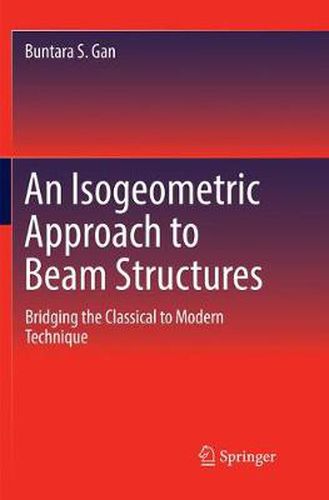Readings Newsletter
Become a Readings Member to make your shopping experience even easier.
Sign in or sign up for free!
You’re not far away from qualifying for FREE standard shipping within Australia
You’ve qualified for FREE standard shipping within Australia
The cart is loading…






This book proposes a novel, original condensation method to beam formulation based on the isogeometric approach to reducing the degrees of freedom to conventional two-node beam elements. In this volume, the author defines the Buntara Condensation Formulation: a unique formulation in condensing the dynamic equilibrium equation for beam structures, suitable for reducing the number of unlimited dynamic equations necessary to yield a classic two-node beam element. Professor Buntara’s method overcomes the problem of the isogeometric approach where the number of degrees of freedom is increased along with the complexity of the geometrical beam element and facilitates implementation of the codes into the existing beam structures programs, and CAD geometrical data into the conventional FE beam element codes. The book proposes a new reduction method where the beam element can be treated as under the conventional beam element theory that has only two nodes at both ends.
$9.00 standard shipping within Australia
FREE standard shipping within Australia for orders over $100.00
Express & International shipping calculated at checkout
This book proposes a novel, original condensation method to beam formulation based on the isogeometric approach to reducing the degrees of freedom to conventional two-node beam elements. In this volume, the author defines the Buntara Condensation Formulation: a unique formulation in condensing the dynamic equilibrium equation for beam structures, suitable for reducing the number of unlimited dynamic equations necessary to yield a classic two-node beam element. Professor Buntara’s method overcomes the problem of the isogeometric approach where the number of degrees of freedom is increased along with the complexity of the geometrical beam element and facilitates implementation of the codes into the existing beam structures programs, and CAD geometrical data into the conventional FE beam element codes. The book proposes a new reduction method where the beam element can be treated as under the conventional beam element theory that has only two nodes at both ends.